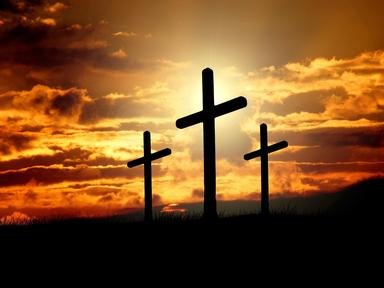Quiz Answer Key and Fun Facts
1. Although the term 'Christian martyr' has come to mean someone who is killed for their Christian faith, what was the original meaning of the word 'martyr' - reflecting the first martyrs' personal relationship with Jesus?
2. Who was stoned to death for insisting that Jesus was the Messiah, and is regarded as the first Christian martyr?
3. Of the original Apostles (not including Judas Iscariot), which one - known as the Beloved Disciple - was generally believed to be the only Apostle not to have been martyred, ending his days on the Greek island of Patmos?
4. Who is known as the saint who was martyred twice, and was also the eponymous hero of a controversial 1976 homoerotic film written and directed by Derek Jarman?
5. In 1220, five religious members of a recently established Order of Friars were sent to Morocco to convert "the infidels of the East" and were beheaded by the Moorish king who thought they were mad. Which Order, associated with poverty and the Italian town of Assisi, did this martyred group of friars belong to?
6. The most famous of all Christian women martyrs is the Maid of Orléans, Joan of Arc. During her showcase ecclesiastical trial, orchestrated by the English at Rouen in 1431, what was the basis of the heresy she was eventually found guilty of, and burned at the stake for?
7. In 1555 and 1556, three leaders of the English Protestant Reformation, Nicholas Ridley, Hugh Latimer and Thomas Cranmer, were burned at the stake and martyred on the orders of the Catholic queen, Mary I. By what name were the three bishops collectively known?
8. The last Catholic martyr to die in England, in 1681, was the Archbishop of Armagh and Primate of All-Ireland, who was hanged, drawn and quartered at Tyburn Gallows in London. Who was this Irish saint whose preserved head remains on display today?
9. A German Lutheran pastor who had opposed Hitler since the early 1930s was executed by strangulation in Flossenburg concentration camp in the final weeks of World War II. In 1998, a statue of him was unveiled at Westminster Abbey in London, as one of ten 20th century Christian martyrs. Who was he?
10. In El Salvador, who was the Archbishop assassinated by a government-supported death squad while celebrating mass in 1980, after he began to speak out strongly against poverty and political repression?
Source: Author
dsimpy
This quiz was reviewed by FunTrivia editor
CellarDoor before going online.
Any errors found in FunTrivia content are routinely corrected through our feedback system.
